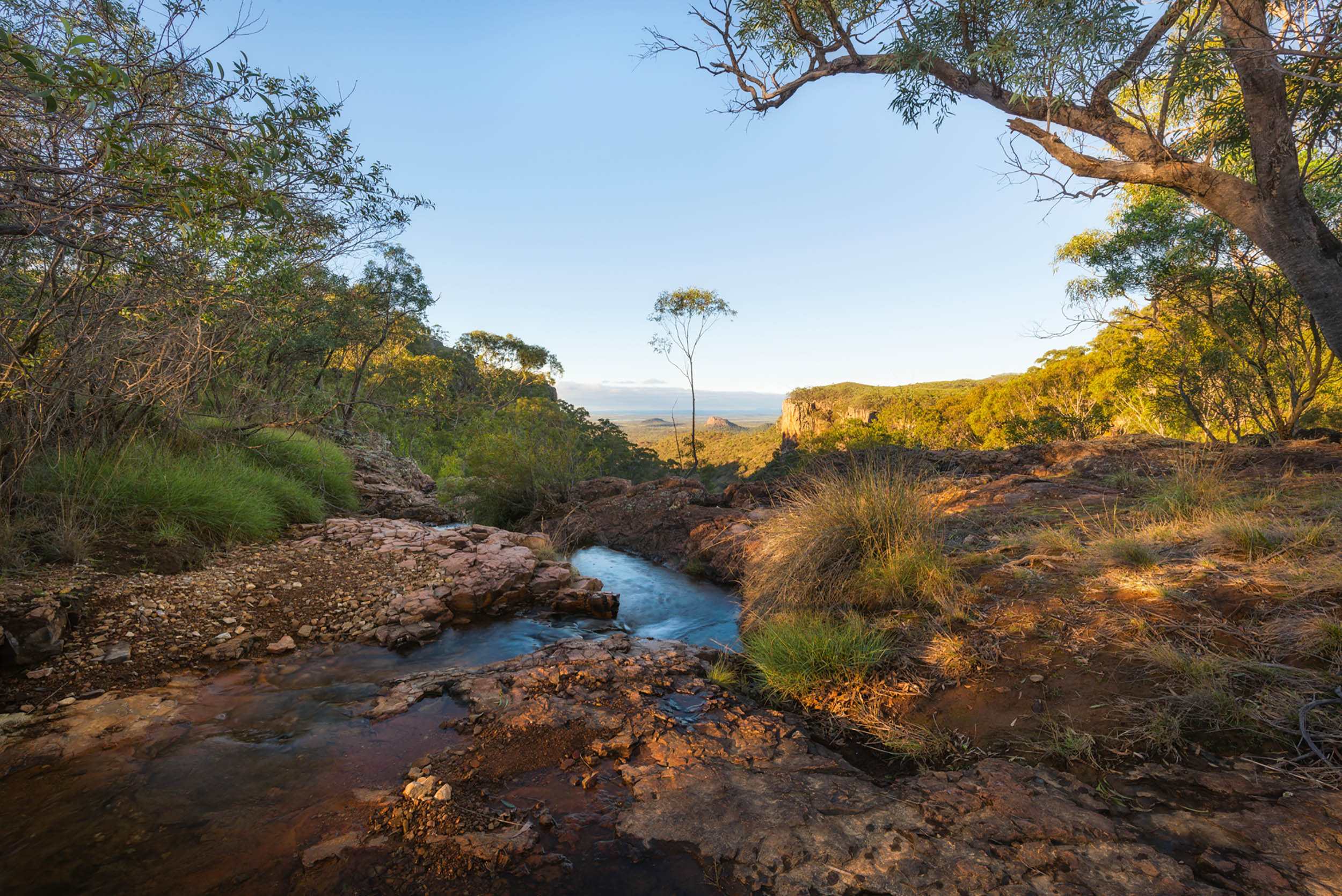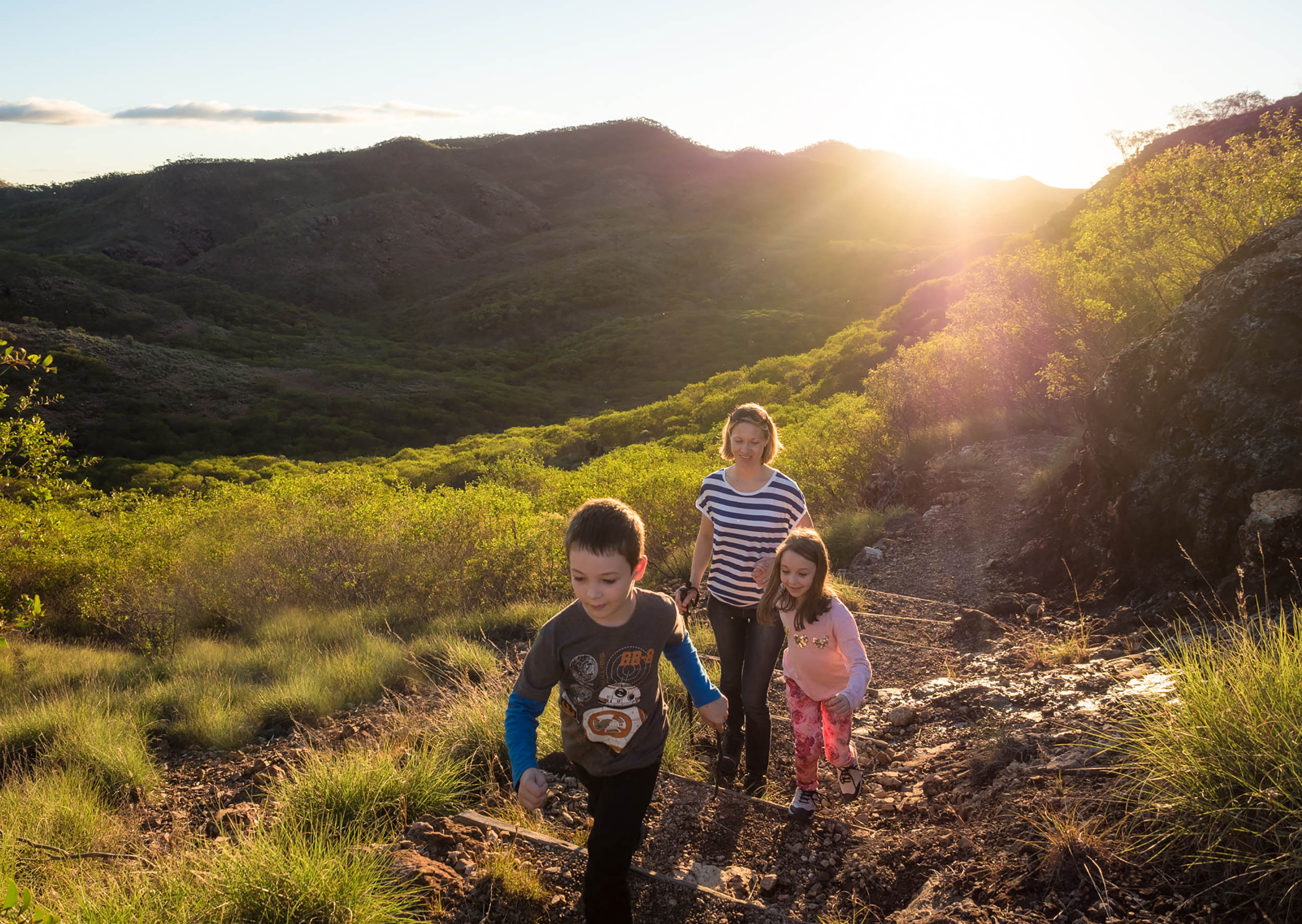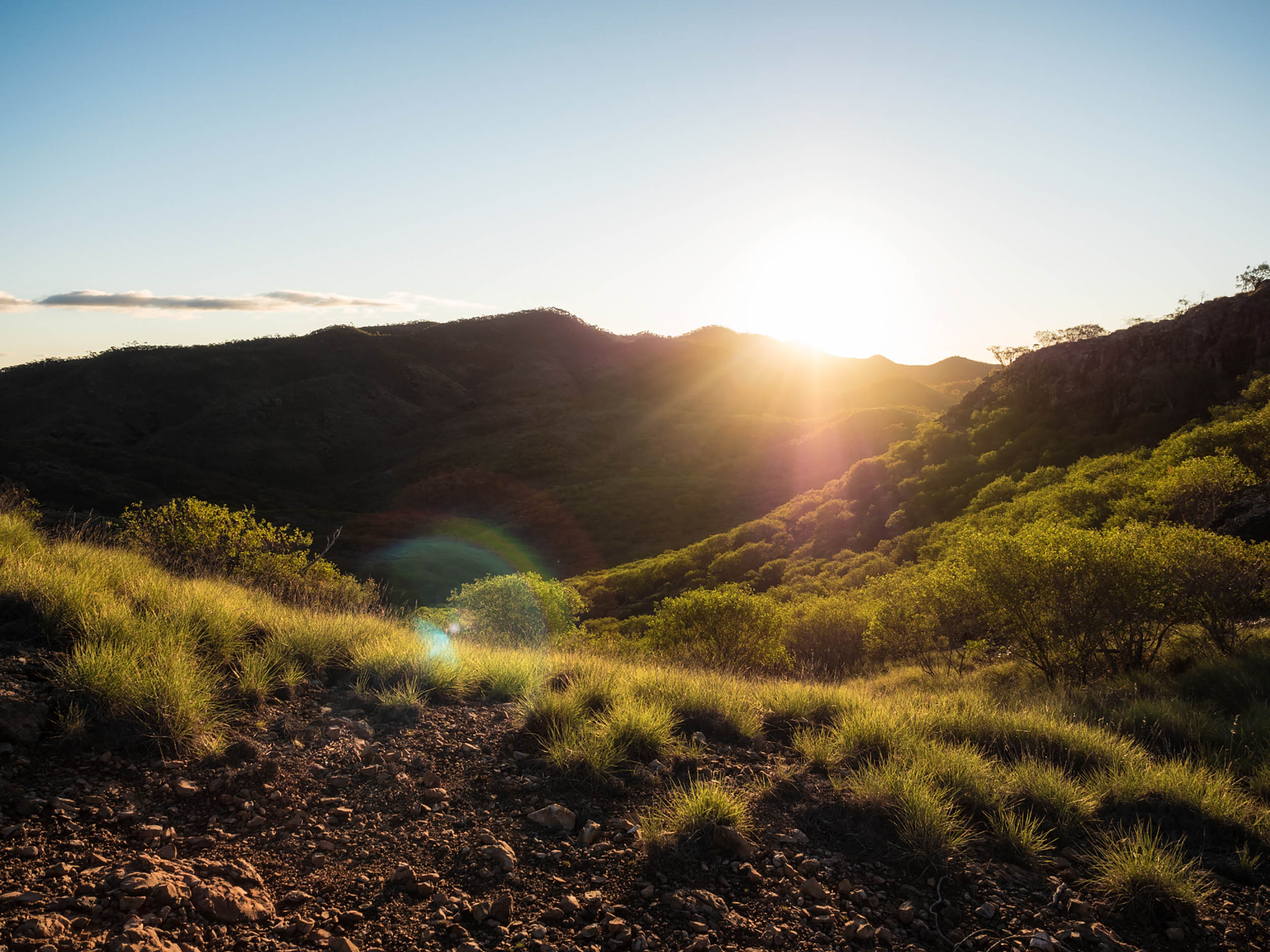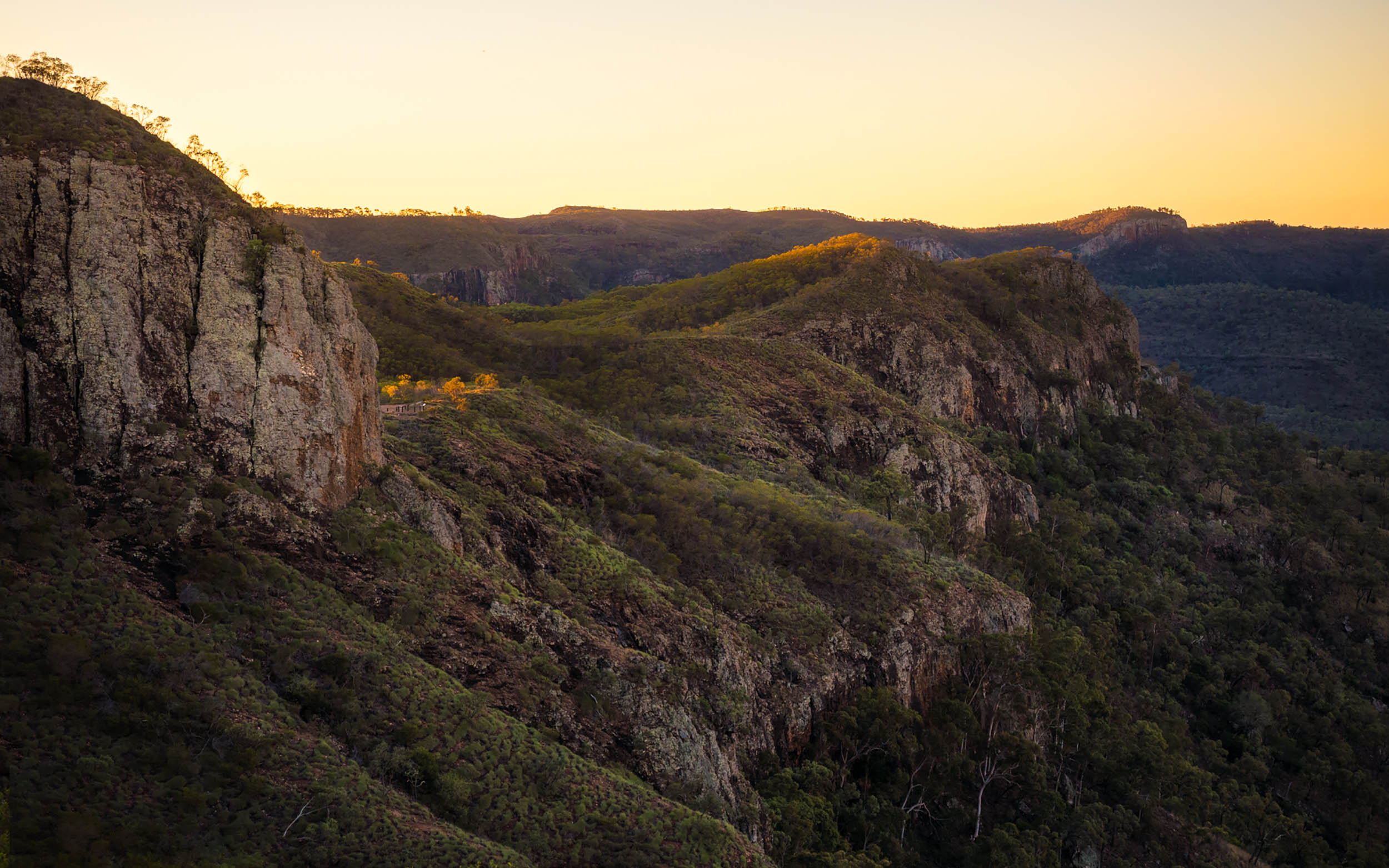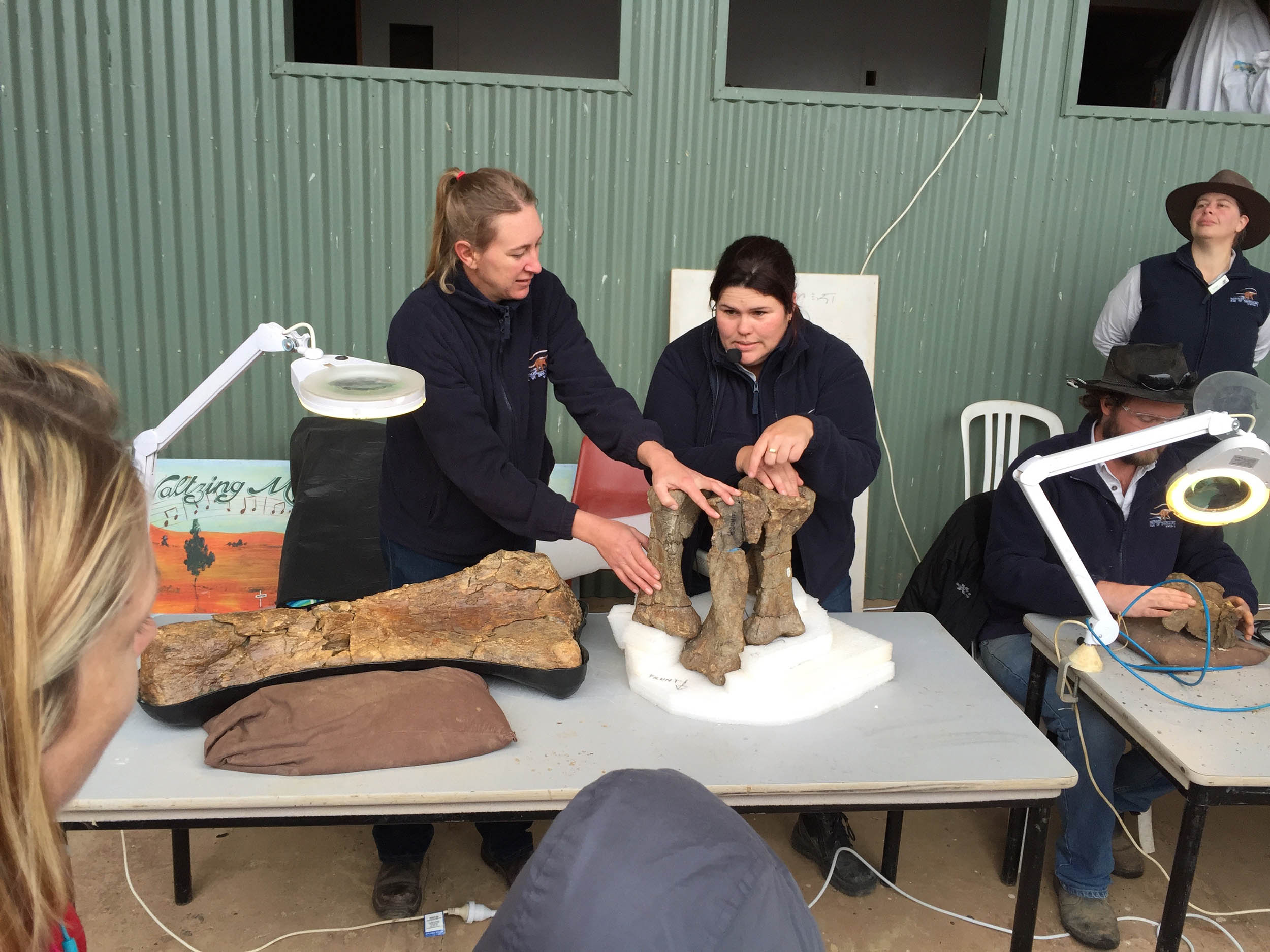Springsure is a friendly little town approximately 67km south of Emerald along the Gregory Highway in Queensland’s Capricorn region. While this is a well known location on the annual grey nomad northern pilgrimage trail, I wonder how many are aware that there is an amazing natural wonder hiding right on Springsure’s doorstep.
Virgin Rock as seen from Lions Park
It is hard to miss the spectacular Virgin Rock and Mount Zamia which dominate the horizon as you head into the valley surrounding Springsure. The Virgin Rock has a naturally formed likeness to the Virgin Mary and Child however in recent years the image is harder to see. The cliffs are floodlit at night and really make for a spectacular scene. The best area to view the cliffs are from Lions Park approximately 4km north from Springsure.
Spotlights on Virgin Rock and Mount Zamia are stunning at night!
I highly recommend viewing Virgin Rock from the common vantage point along the highway, however the area that I am keen to tell you about is situated just on the other side of these monoliths.
Minerva Hills National Park is relatively small, but the perfect location for a weekend adventure. Whilst it is accessible to most vehicles, the road (which is unsealed) is rough in some areas and you may require a car with extra clearance. Our last visit was after recent rain and there was mud in places that may pose an issue if you are not in a 4WD. That however is all part of the fun!
Sunset over the valley and tablelands as seen from the top of one of the many small hills throughout the park
I get the impression that this national park is not very well known to travellers because during the last few times that I have visited, I had that place all to myself. Now I’m certainly not complaining as I really enjoy the solitude when photographing a place like this but I can’t help but wonder how many tourists drive straight past without realising what they are missing.
Signage to the park is pretty much none existent and even the entrance is a blink and you’ll miss it situation. Access is via the Dawson Developmental Road which heads west out of Springsure. The turn off is approximately 4km from town.
Fred's Gorge
Once you enter the national park you slowly make your way up and around through an interesting landscape of hills and valleys with rocky ground and sparse bushland. There is one main road through the park with a number of smaller trails/walking tracks/points of interest along the way. My recommendations to check out are Fred’s Gorge Lookout/ Picnic Area, Skyline Lookout and Eclipse Gap.
Sunrise from the Eclipse Lookout
Fred’s Gorge is a great area to stop for lunch with picnic tables, barbecues and toilets available. Eclipse Lookout is by far the most easily accessible as you can drive right up to the edge of the valley and for one view to rule them all, you simply cannot go past Skyline Lookout. At the base of the walk there is a small car park followed by a moderate grade 800m track to some amazing views over the valley and Springsure. We were there at sunset however this one would be perfect to catch the morning sun peaking into the valley.
Gorgeous sunset views along the walk to the Skyline Lookout
Wildlife to watch out for range from eastern grey kangaroos, wallaroos and wallabies (we came across plenty of these little guys) to nocturnal critters such as the sugar-glider and the larger greater-glider.
If you are travelling through this part of the world on your way to Carnarvon Gorge or heading north, it is well worth the extra night in Springsure to check it out. All you need to take with you is a picnic lunch, your hiking boots and a sense of adventure.







